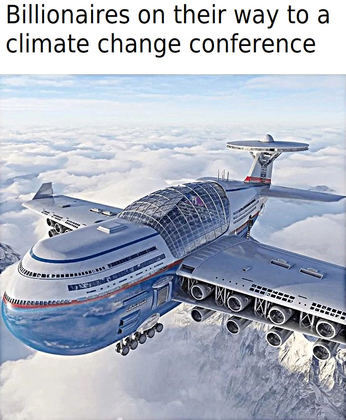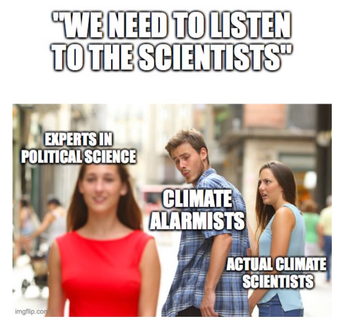Climate change and nuclear power, part 2
Dear Hiveans,
today a short follow-up on my post about climate change and nuclear energy.

Why is the energy density relevant?
The energy density is a key factor when comparing energy sources like solar, wind, oil, coal, and nuclear energy, as it indicates how much energy can be stored or produced per unit of mass or volume from a given amount of resources. It impacts
- energy extraction efficiency,
- space requirements (high energy density sources like nuclear or oil require less space for the same amount of energy compared to solar or wind farms, which need large areas for panels or turbines. This is critical in densely populated areas or where land is limited),
- transport and storage (fuels with high energy density (e.g., oil) are easier to transport and store than those with lower density (batteries supplied with solar and wind energy)),
- scalability and infrastructure (high energy density allows for compact power plants (nuclear), while solar and wind require larger installations and networks to deliver comparable energy, affecting infrastructure costs and complexity), and
- applications (energy density is crucial for applications needing high energy in compact forms, like vehicles or portable devices. Oil excels here due to its high energy density and ease of use).
Today there are no low-energy rich countries, but in the future maybe?
Energy is the foundation of economic activity: virtually all economic processes—manufacturing, transportation, agriculture, services, and technology require energy. Access to abundant and cheap energy fuels (pun intended) economic growth. Energy industries (e.g., oil, gas, renewables) create jobs directly, while energy availability supports jobs in other sectors by powering businesses. Disruptions in energy supply, like oil crises, can lead to economic downturns and unemployment (oil crises in the 1970s). Furthermore countries with abundant energy resources (e.g., oil-producing nations) often wield significant economic influence.
Follow-up questions
- One follow-up question that is more complex than the question IF we should strive to steer the climate, is the question WHO should steer it, HOW we should steer it, on what geographical unit we should steer or for what regions we should optimize the weather. These are highly political and sensitive topics.
- Concerning nuclear power, one follow-up question that is more complex than the question IF we should increase nuclear power production, is the question HOW we should attain that goal. Should governments get involved? What kind of reactors (pressurized water reactor, boiling water reactor, natural uranium gas graphite reactor, advanced gas reactor, elevated temperature gas cooled reactor, heavy water nuclear reactor, fast breeder reactor) should be built? What nuclear fuel should be utilised (uranium, plutonium, thorium - which is more abundant, can't be readily diverted for nuclear weapons, produces less long-lived radioactive waste, offers higher energy efficiency, and has a reduced risk of a meltdown)?
Have a great day,
zuerich










Liebe Hiver,
heute ein kurzer Nachtrag zu meinem Post über Klimawandel und Kernenergie.

Warum ist die Energiedichte wichtig?
Die Energiedichte ist ein Schlüsselfaktor beim Vergleich von Energiequellen wie Sonnen-, Wind-, Öl-, Kohle- und Kernenergie, da sie angibt, wie viel Energie pro Massen- oder Volumeneinheit aus einer bestimmten Menge von Ressourcen gespeichert oder erzeugt werden kann. Sie wirkt sich aus auf
- die Effizienz der Energiegewinnung,
- Platzbedarf (Energiequellen mit hoher Energiedichte wie Kernenergie oder Öl benötigen weniger Platz für die gleiche Energiemenge im Vergleich zu Solar- oder Windkraftanlagen, die große Flächen für Paneele oder Turbinen benötigen. Dies ist in dicht besiedelten Gebieten oder dort, wo das Land begrenzt ist, von entscheidender Bedeutung),
- Transport und Lagerung (Brennstoffe mit hoher Energiedichte (z. B. Öl) sind leichter zu transportieren und zu lagern als Brennstoffe mit geringerer Dichte (Batterien, die mit Solar- und Windenergie versorgt werden)),
- Skalierbarkeit und Infrastruktur (hohe Energiedichte ermöglicht kompakte Kraftwerke (Kernenergie), während Solar- und Windenergie größere Anlagen und Netze erfordern, um vergleichbare Energie zu liefern, was sich auf die Infrastrukturkosten und die Komplexität auswirkt), und
- Anwendungen (die Energiedichte ist entscheidend für Anwendungen, die hohe Energie in kompakter Form benötigen, wie Fahrzeuge oder tragbare Geräte. Erdöl zeichnet sich hier durch seine hohe Energiedichte und einfache Nutzung aus).
Heute gibt es keine energiereichen Länder, aber vielleicht in der Zukunft?
Energie ist die Grundlage der Wirtschaftstätigkeit: Praktisch alle wirtschaftlichen Prozesse - Produktion, Transport, Landwirtschaft, Dienstleistungen und Technologie - benötigen Energie. Der Zugang zu reichlich und billiger Energie treibt das Wirtschaftswachstum an. Energieindustrien (z. B. Öl, Gas, erneuerbare Energien) schaffen direkt Arbeitsplätze, während die Verfügbarkeit von Energie durch die Versorgung von Unternehmen Arbeitsplätze in anderen Sektoren unterstützt. Unterbrechungen der Energieversorgung, wie Ölkrisen, können zu Wirtschaftsabschwüngen und Arbeitslosigkeit führen (Ölkrisen in den 1970er Jahren). Darüber hinaus üben Länder mit reichhaltigen Energieressourcen (z. B. Öl produzierende Länder) oft einen großen wirtschaftlichen Einfluss aus.
Folgefragen
- Eine Folgefrage, die komplexer ist als die Frage, OB wir uns um die Steuerung des Klimas bemühen sollten, ist die Frage, WER es steuern sollte, WIE wir es steuern sollten, auf welcher geografischen Einheit wir es steuern sollten oder für welche Regionen wir das Wetter optimieren sollten. Dies sind hochpolitische und sensible Themen.
- Was die Kernenergie betrifft, so ist eine Folgefrage, die komplexer ist als die Frage, OB wir die Kernenergieproduktion erhöhen sollten, die Frage, WIE wir dieses Ziel erreichen sollten. Sollten sich die Regierungen einmischen? Welche Art von Reaktoren (Druckwasserreaktor, Siedewasserreaktor, Erdgas-Graphit-Reaktor, fortgeschrittener Gasreaktor, gasgekühlter Reaktor mit erhöhter Temperatur, Schwerwasserkernreaktor, schneller Brüter) sollten gebaut werden? Welcher Kernbrennstoff sollte verwendet werden (Uran, Plutonium, Thorium - das in größeren Mengen vorhanden ist, nicht ohne weiteres für Kernwaffen verwendet werden kann, weniger langlebige radioaktive Abfälle erzeugt, eine höhere Energieeffizienz bietet und ein geringeres Risiko einer Kernschmelze aufweist)??
Have a great day,
zuerich










Congratulations @zuerich! You have completed the following achievement on the Hive blockchain And have been rewarded with New badge(s)
Your next payout target is 86000 HP.
The unit is Hive Power equivalent because post and comment rewards can be split into HP and HBD
You can view your badges on your board and compare yourself to others in the Ranking
If you no longer want to receive notifications, reply to this comment with the word
STOPA concise and thoughtful follow-up that reminds us: it's not just about whether we should act on climate and nuclear energy, but how, who decides, and at what cost.
We cart so much fluid around. Dishwashing detegrent. Laundry liquid. Oil, and so much more. So much demand for energy is just getting goods to where they are needed or used.
Optimisation of the supply chain, distributed manufacturing and all that goes with that reduces our need for energy to begin with.
I shouldn't need to eat an ice cream made in Italy in Australia (seriously, there's stuff in the freezer at my local supermarket that is made in Italy!) - I can't imagine the wasted energy to bring that to here, frozen all along the way!
The same thing could be manufactured locally at a lower energy expense, all in, compared to the energy inputs of manufacture and transport all the way across the world.
Hmmm, you're right on this one. What a paradoxical statement. Thanks for sharing.
As for what you explain with the use of uranium, plutonium and thorium, that must not be diverted to produce weapons. God willing those who work with these chemicals will understand this and come to their senses to protect the environment; otherwise, we will be heading for a cataclysm. May God bless you and give you and your family good health.
Teenage Mutant Ninja Turtles!!
and what a plane..

!LOL
Posted using MemeHive
lolztoken.com
A masta-Don.
Credit: deanlogic
@zuerich, I sent you an $LOLZ on behalf of memehive
(4/10)
Delegate Hive Tokens to Farm $LOLZ and earn 110% Rewards. Learn more.
!LOL
Posted using MemeHive
lolztoken.com
To get his teeth crowned.
Credit: reddit
@zuerich, I sent you an $LOLZ on behalf of holovision
(5/10)
Farm LOLZ tokens when you Delegate Hive or Hive Tokens.
Click to delegate: 10 - 20 - 50 - 100 HP
A very nice write up on climatic change and energy. Thanks for sharing.
How I wish I know much as you do about climate change. You're too good as regard that.